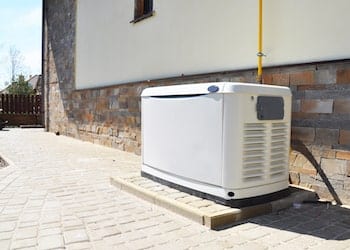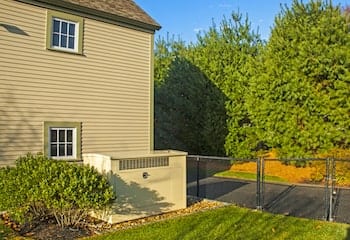18 Mar How To Buy A Home Standby Generator
ShareWhat you need to know about buying a Home Standby Generator.

A home standby generator can overcome that problem and supply you with continuous power for days on end. The reason is that it has a direct connection to your home’s main electrical panel and powered by a separate fuel supply; natural gas, liquid propane, or diesel.
Okay, I realize some of you may have a portable generator sitting in the corner of the garage. Just waiting for the time to come when you have to pull it outside, fill up the gas tank, (if you have any spare gas that is), crank it up, hope it starts, and then plug in a few electrical extension cords to keep a couple of lights and maybe your TV running.
Wouldn’t life be more comfortable if you didn’t have to do anything, but sit back, relax, and get on with your day? A home standby generator makes this all a possibility.
Buying a Home Standby Generator
is simpler than you might think, and there are many reasons for making such an investment:
Safety
– There’s no messing with gas cans and spilling gas all over the place. Minimizing the risk of fire, CO poisoning, and electrical shocks.
Convenience
– Even if you are away from home, you can rest easy knowing that the power will be restored automatically to the essential circuits like A/C, refrigerator, alarm system, or even the whole house.
Value for Money
– The investment you make in a home standby generator will be worth it each time there is a power outage. No more spoiled food in the freezer—no more sitting in the dark, hunting for flashlights or candles, and no more wondering when the power is coming back on.
Three Steps in Selecting a Home Standby Generator.
1. Choose which fuel to use.
Before you buy a generator, you need to identify which fuel type you can use.
Standby generators rated up to 22kW will usually run on natural gas or liquid propane. If you can use diesel, then you would have to look toward purchasing a liquid-cooled whole-house generator, that would be a lot more expensive.
Liquid propane and diesel fuel both require tanks, either buried or placed above ground, to store enough fuel to run the generator properly. Natural gas-run generators require the gas meter and gas line to be the correct size.
2. Calculate Your Power Requirements.
Next, you need to calculate how much power to prepare for during a power outage, and if you require only the critical systems like air conditioning and refrigerators, or if you would like your whole house powered.
Generator Sizes.
If you plan on having your central A/C connected, then you will need a generator that will be able to handle it. For example, if you have a 3-ton air conditioner unit, it will require a standby generator that is 11kW or greater.
To give you an idea of the size of the generator that will be needed to handle the demand, let’s say you have a 2,500 sq. Ft. home and you want to connect the following items to the standby system:
• Central A/C
• Electric Water Heater
• 2 Refrigerators
• 2 Freezers
• Electric Stove/Oven
• Microwave
• Dishwasher
• Garage Door
• Electric Dryer
• 2 computers
• WiFi
• Security System
All the above would mean to power all these units and appliances; you will need a 22kW Standby Generator with an automatic Transfer Switch.
Of course, all the items in your home won’t be running at the same time during a power outage, but the strength of the Standby Generator will be enough for you to carry on as usual until regaining power.
3. Choose the Type of Transfer Switch.
Just as you need a switch to turn your light on, a generator needs a switch to know when to start doing its job.
An Automatic Transfer Switch (ATS) senses when the power to your house has failed and immediately springs into action, powering up the generator. The switch continually monitors the utility power supply. If an outage is detected, along with starting the engine, it disconnects any power coming in from the grid, and electrifies your breaker panel via generator power.
Although the transfer switch does its job automatically, it isn’t instant. There will probably be a few seconds delay between the power going off and the generator powering up, but it is minimal. With restored power, the Automatic Transfer Switch will shut the generator down and reconnect your home to the power grid. The process is seamless, and the only way you know things are back to normal is if you can no longer hear the generator engine running or you go outside and see life coming back to normal.
The Power Is In Your Hands.
Now that you have an insight into just how easy it is to select and buy the correct home standby generator, you can have peace of mind knowing your house will have power when it all goes dark outside.
Please don’t make the mistake of waiting until there is a threat of a storm. You must factor in the time it takes to obtain the necessary permits, permissions, having your fuel tank placed above or under-ground, running a fuel line to the generator, and getting everything installed by a professional company.
Mister Sparky Electrician Springdale, America’s On-Time Electrician in Bella Vista, Bentonville, Rogers, Springdale and Fayetteville services the Northwest Arkansas area with a team of licensed electricians. In addition to flickering lights, some of the electrician services provided by the company include electrical outlet/switch repair, ceiling fan installation, lighting installation, electrical wiring repair, landscape lighting installation and home electrical inspections.


